A project by Myriel Milicevic and Susanne Jaschko
Week of Justice, Friedrich-Ebert-Stiftung, Berlin, Germany, April 2015
Bhoomi Festival of Living Soil, Delhi, India, September 2015
Navdanya Farm, Dehradun, India, September 2015
J.P. International School, Muradabad, Uttar Pradesh, India, September 2015
How much ‘land’ is in your daily food? How do the right to use land, the actual use of land and the food you eat relate?
Today, soil is under pressure. Growing consumption and increasing demand for resources take a toll on the soil — urbanisation, intensive farming, erosion and land grabbing are only some of the manifold consequences. Soil as matter is as much affected by these contemporary phenomena as the livelihood of people who have farmed for generations.
Before this background, Myriel Milicevic and Susanne Jaschko developed Out of Soil: made out of soil / running out of soil. The playful project locates itself between performative intervention, art and knowledge transfer.
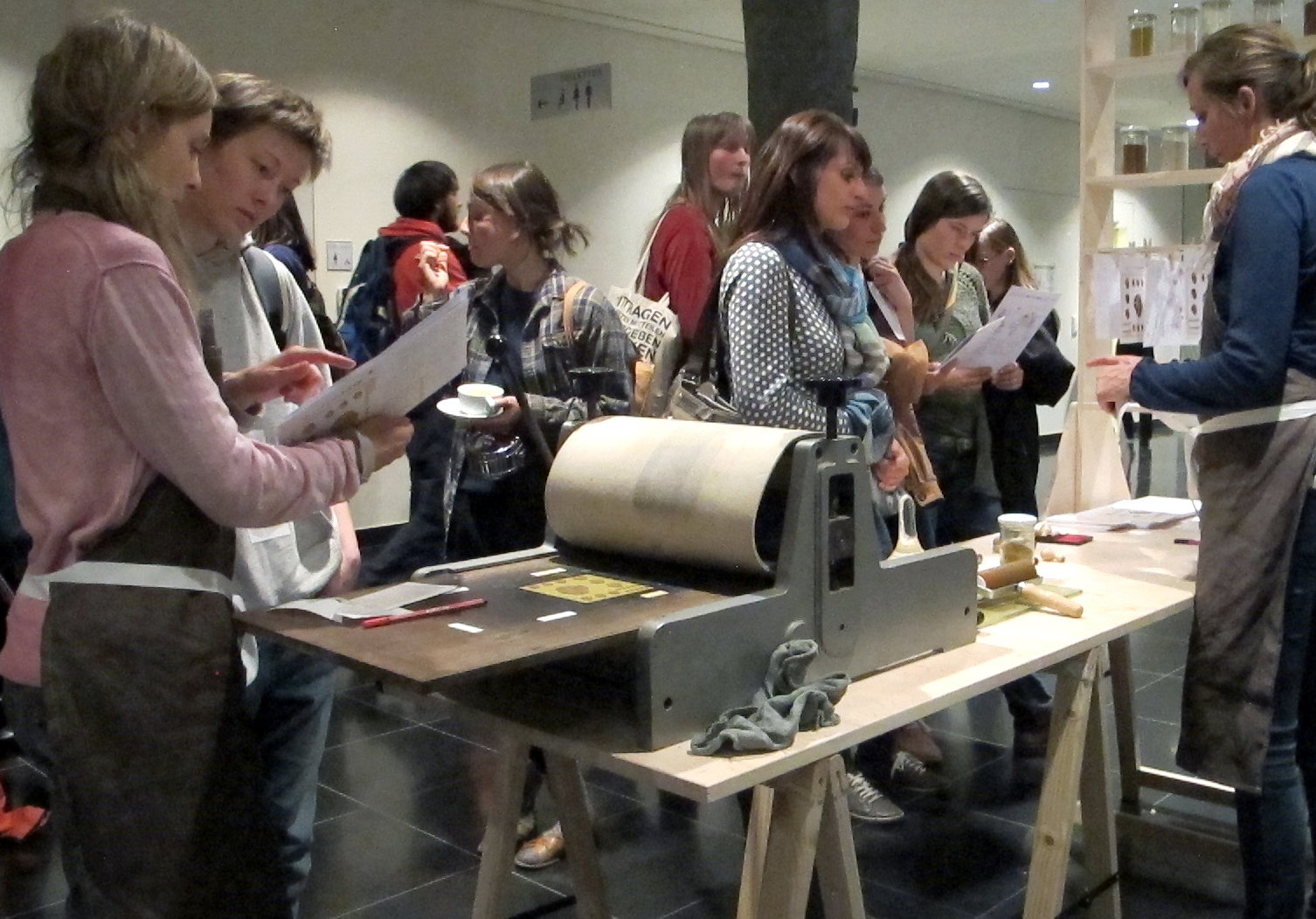
The project was originally created for the Week of Justice of the Friedrich Ebert Foundation in Berlin in April 2015, a conference during which consequences of and alternatives to neoliberalism and globalisation were discussed. Myriel and Susanne stood at the Soil Press Station and interacted with conference attendees on three evenings. Next to the Soil Press Station was the Out of Soil Map. Neither the wooden structure of the Soil Press Station that held a printing press and several glasses filled with soil, nor the performers wearing aprons, nor the big map supported a clear attribution to a specific group or activity. Was this the campaign of an NGO, a new kind of geography class or a live demo of a printing shop that included the distribution of flyers?
Out of Soil playfully uses of a vocabulary of forms. Name stickers for instance — usually used at conferences — become Soil Profiles. As we know, scientists produce soil profiles by vertically cutting through the soil to reveal the various layers and sediments. Instead the Soil Profiles produced by Myriel and Susanne in dialogue with the participants made each participant’s personal relation to soil visible. When going through the predefined statements on the stickers, conversations quickly unfolded. People wondered, ‘Am I a land grabber although I am not actively grabbing land, but because I live in a country that buys or leases land overseas?’, ‘Do I own land, if I grow tomatoes on my balcony?’ or ‘ Do I know anything about soil?’. The performers attached the Soil Profiles onto the people’s clothes in order to stimulate further exchange between the conference attendees.
Visitors were also given 10 sq of printed soil. These Soil Stamps were printed with paint made out of earth and resembled food cards. They drew attention to the fact that food can only be produced in exchange for other resources. When distributing them, Myriel and Susanne invited the people to later return to the Soil Press Station for having them stamped.

Many visitors followed the invitation and when they did, they were asked what they had consumed during the day. The performers stamped the visitors’ pieces of soil, depending on the average acreage, which was used for the production of the food they had consumed: less than 0.1 sq for 100 gr of various vegetables, or e.g. 3 sq for 100 gr beef. Quickly the fields got filled with stamps of a chicken, a potato, a loaf of bread, a steaming cup of coffee and the outlines of other food products. In this process, the participants unveiled very different eating habits as well as personal food stories. The participants responded in various ways to the inquiry. Some elaborated on what they enjoy to eat and drink; others expressed concern about their own consumption.
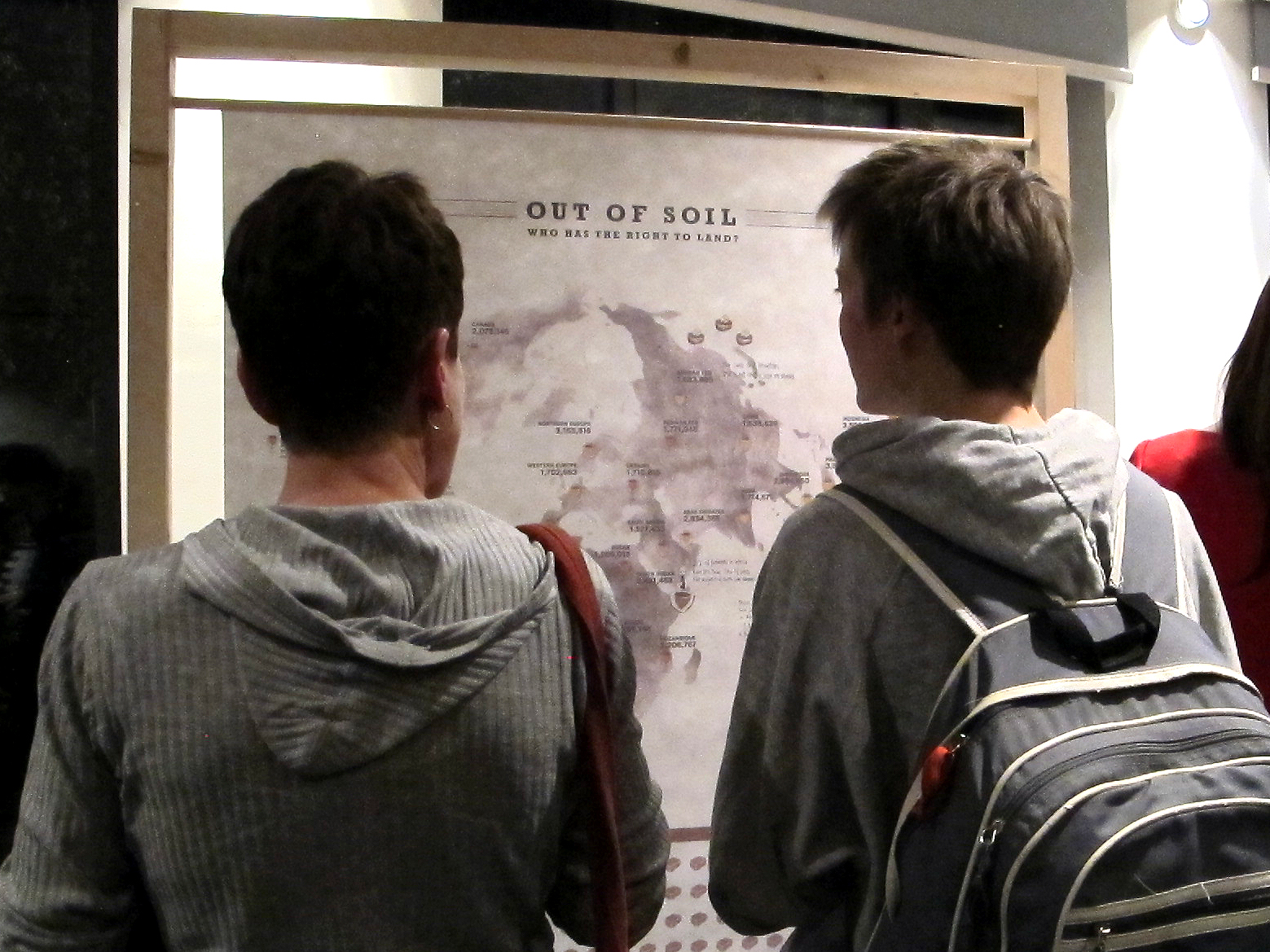
The Out of Soil Map constituted the third part of the project. It illustrated the issue of large-scale land acquisitions: the buying of large pieces of land in developing countries by domestic and transnational corporations and governments. These transactions have long-lasting consequences for local and regional agriculture and ecosystems, for farmers and for the provision of local populations. Land is not just a two-dimensional plot that can be marked off or whose monetary value assessed with simple maths. Land that is bought by foreign companies and governments is usually neither unused nor uninhabited. Often men live from one piece of land for generations, using its wood and plants with a view towards maintaining balance, long-term sustainability. For those peoples, access and use of this land is a matter of existence.
Small farmers — i.e. farmers who exploit less than 1 hectare of land — feed the vast majority of people in the world. It is them who suffer most from speculation and land grabbing, for the simple fact that capitalisation renders land financially inaccessible to them.
Out of Soil is a participatory project that blends play and politics, performance and participation, the private and the public. It remains ambivalent, transversal and open for interpretation. Participants are not judged on their consumption habits. No commentary and no final statement are made about their lifestyles. The most concrete result that they can take home are their personal Soil Profiles and Soil Stamps. But even these items, what are they exactly? Artworks or performance artefacts that the participants should keep or rather flyers that they can dump carelessly?
In April 2015, when we did the Out of Soil project at the Friedrich Ebert Stiftung in Berlin, Dr Vandana Shiva invited us to India. Supported by the ifa foundation, we went there in late September and participated in Bhoomi, the festival of the living soil in Delhi. We also ran two workshops as an extension to the original Out of Soil project.
The Soil Games workshop
The first part of our trip took us to the Navdanya farm in Dehradun, which is a rural region north of Delhi. Navdanya is an organisation, which is founded by Vandana Shiva for conserving seeds, biodiversity, culture and farming knowledge. People with different backgrounds come from India and all over the world to this farm to learn about sustainable agriculture. When we arrived, we joined the final days of the A-Z seminar of eco-agriculture, a 4-weeks course that provides hands-on knowledge about organic farming and biodiversity.
Together with seminar participants, we held our first workshop on Soil Games. We started out with the question: what would soil say if it could speak? Discussing this in pairs of two, people wrote down their personal slogans and attached them to their garments.

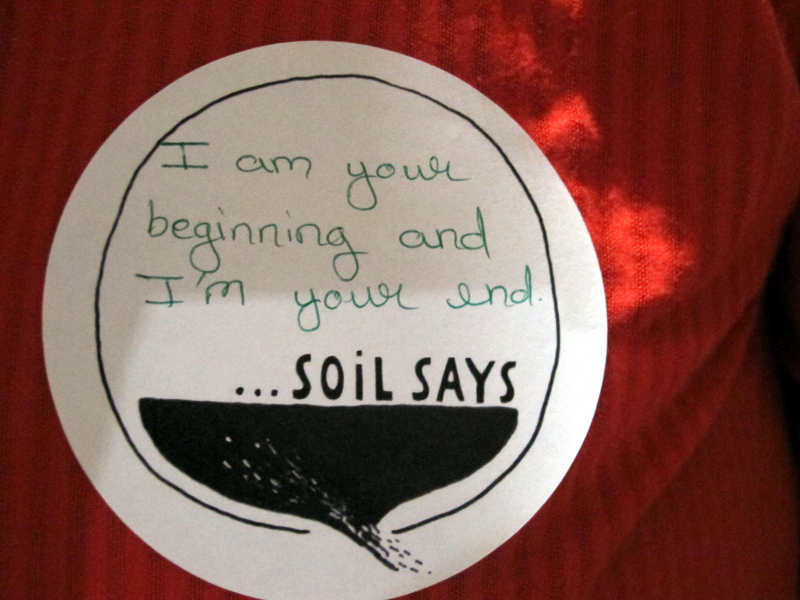
After a mapping of soil topics and game types, we drew possible connections between the two areas. In small groups, people started quickly developing ideas for soil games and sketching them out on big sheets of paper. In the end, they created about seven different concepts of soil games, ranging from a simple memory game to a very complex variation of Monopoly called “Monoposoil/Soilpoly”. As players enjoy growing their fields in the game, they learn about the consequences of capitalistic agriculture and their choices on organic or non-organic cultivation.
The Soil Stories workshop
We also ran a Soil Stories workshop with students at J.P. International School in Muradabad, Uttar Pradesh. Working with 82 teenagers within a very limited amount of time, we focused on creating soil related narratives. Muradabad is a small rural town where most families farm, so most kids have a connection to soil – which also became apparent when we invited the students to share their personal stories dealing with soil. In groups of five they created one story cube, by combining key elements of their own stories with terms from our introduction into the topic or elements of myths and legends.
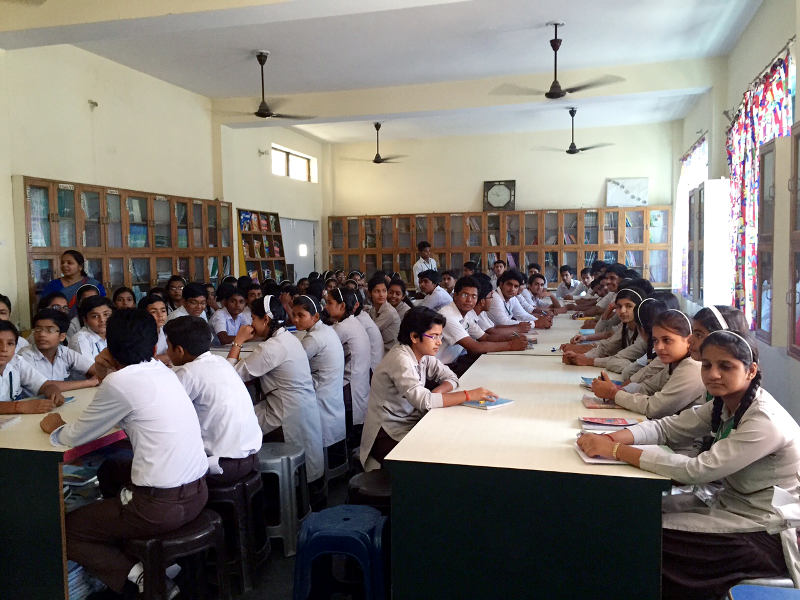
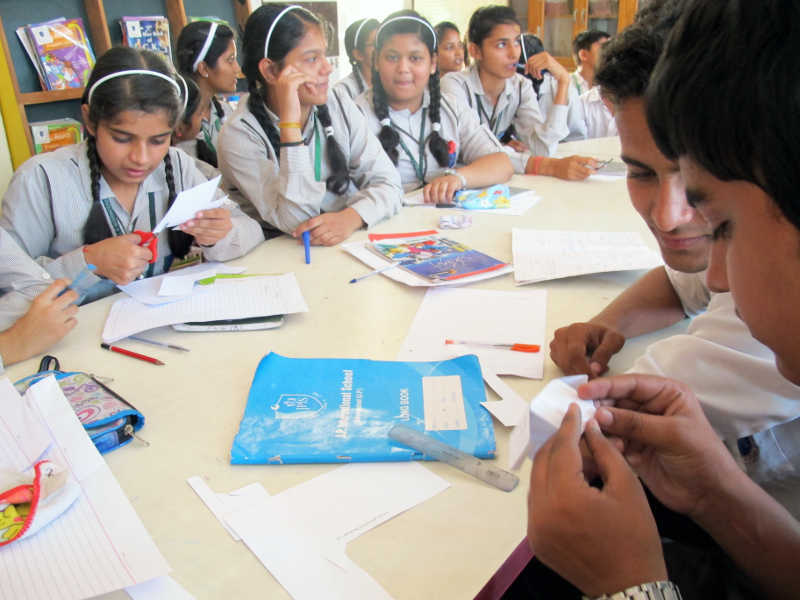
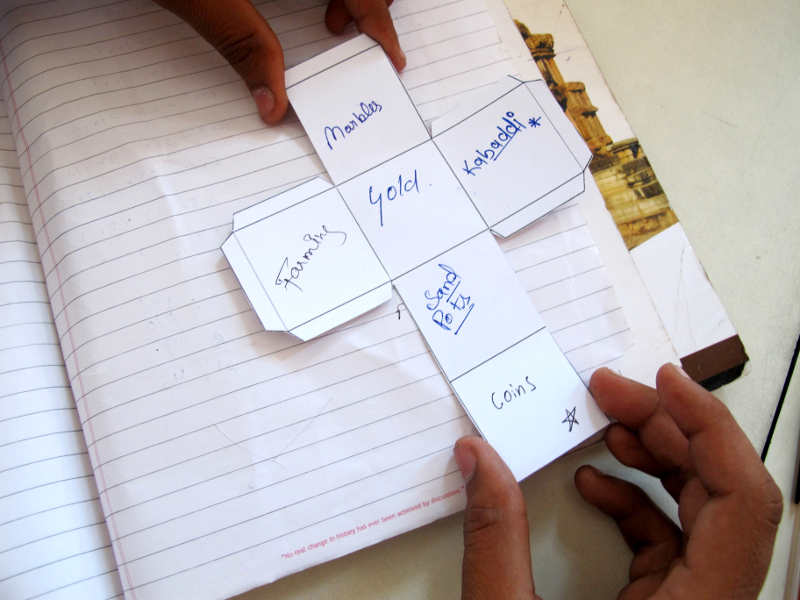
This resulted in fifteen story cubes that were amazingly rich in associations and ideas. One group after another threw their dice. Depending on the words displayed, the kids invented a part of a story that was to be continued by the following group. Since the time was limited, we could not explore the full narrative potential of the story cubes during the workshop, but we could see that they would work very well both as a creative method of story telling and as an inspiration for the kids to think about soil in an unusual and fun way.
The Out of Soil action at Bhoomi
The last stop on our Out of Soil journey was the Bhoomi festival in Delhi. Being half conference, half festival, Bhoomi is an event that celebrates the living soil, and this year it brought together 20 speakers and performers from around the world. More than 250 people attended the event that took place at the International Conference Centre in the heart of New Delhi. We set up a scaled-down version of the Soil Press Station, comprising Out Of Soil Stamps with information specifically relevant to India, ‘Soil says’ stickers, and the world map. During the one-day event we spoke with many people, handed out the stickers for them to fill in and wear, and stamped the Soil Stamps in order to assess people’s personal land footprint. The conversations we had with the visitors often centred on the issue of food consumption, and we got the impression that most people we talked to are naturally very conscious of their diet and its relation to soil and health.
Again, the ambiguity of the project—looking like an info booth of an NGO at first glance, but being an artistic participatory project—generated a lot of curiosity about our background and intention. The playfulness of the project levelled the potential threshold and allowed for a very diverse audience to engage in an open discussion about who has the right to land, how land is used and what it takes to preserve fertile grounds for the livelihoods of people.
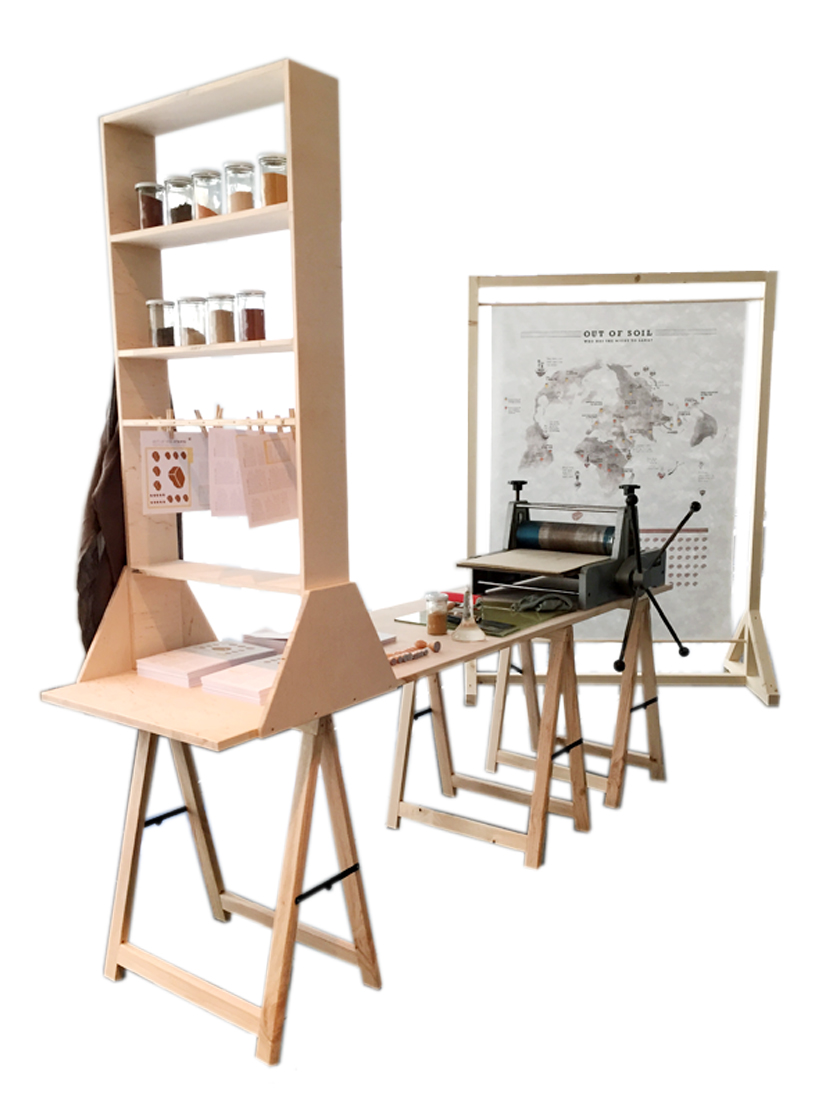
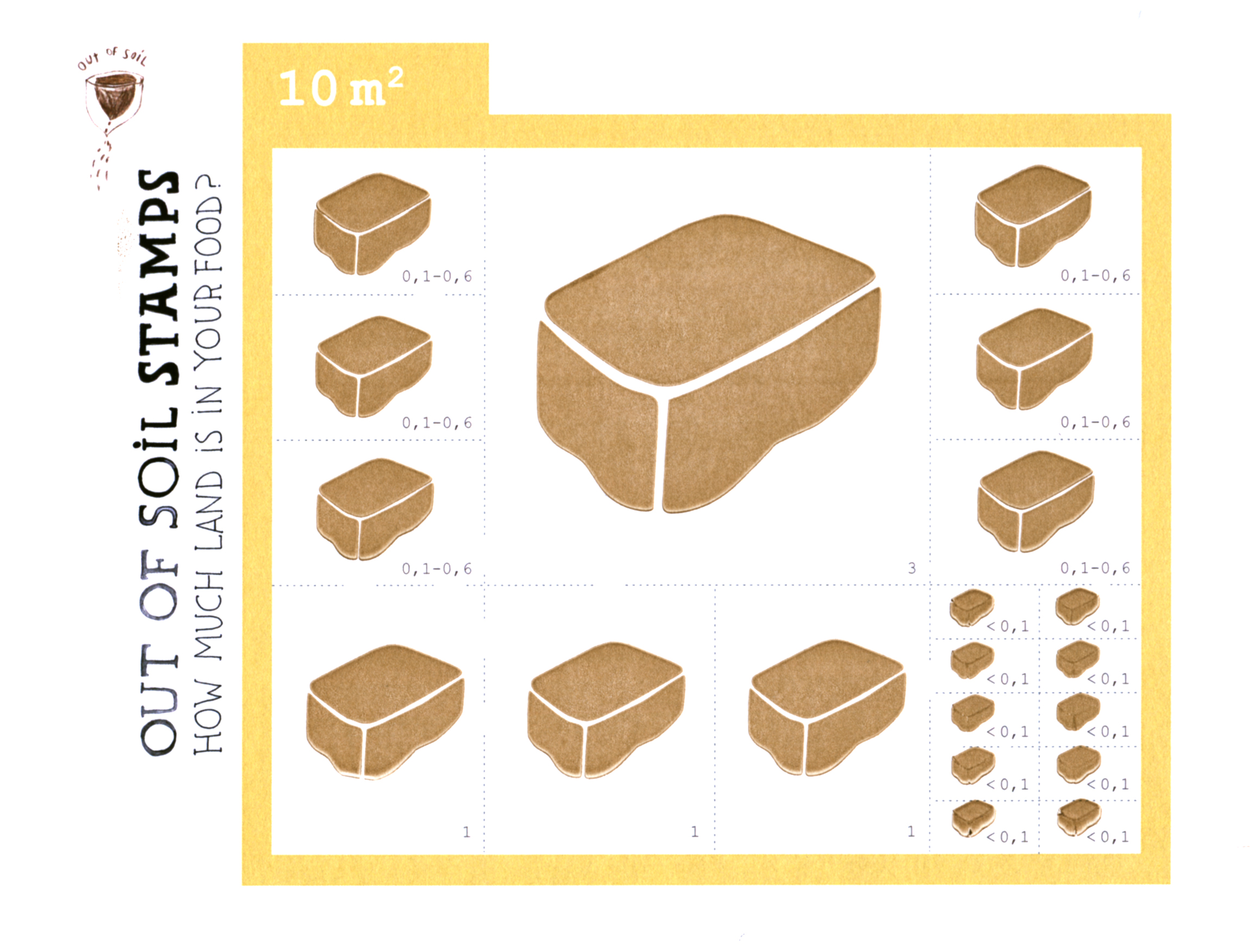
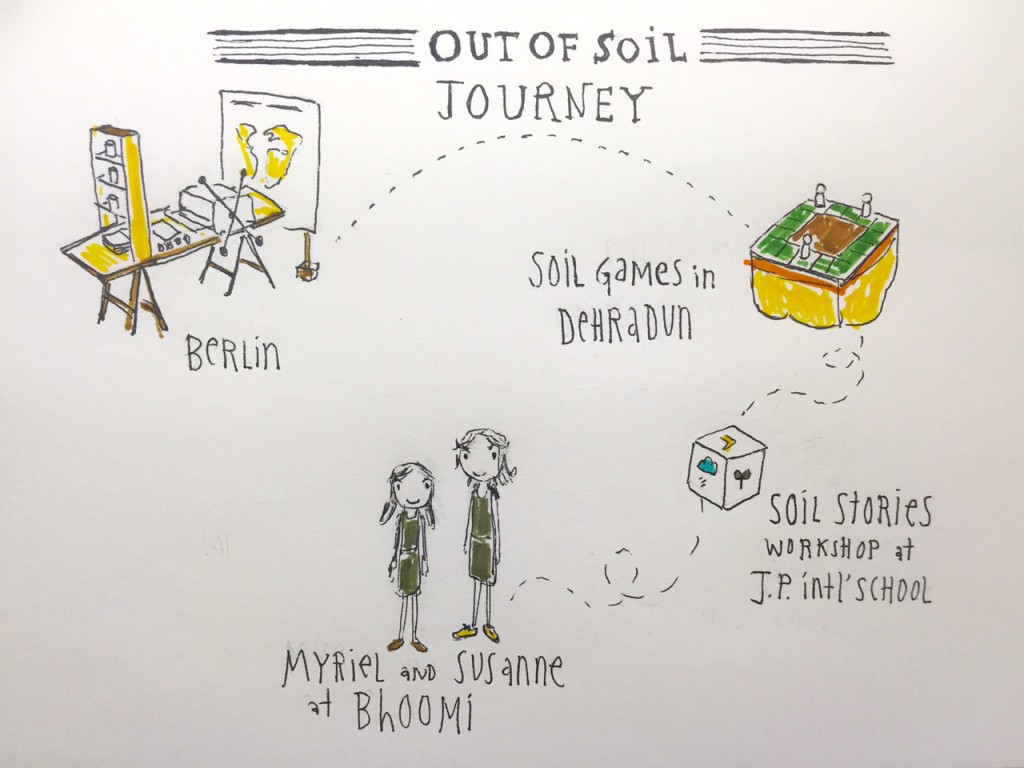
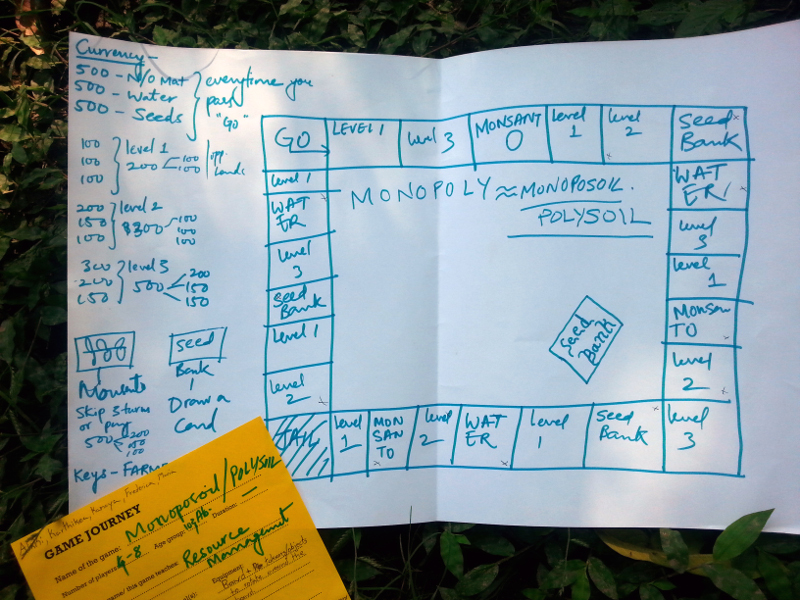
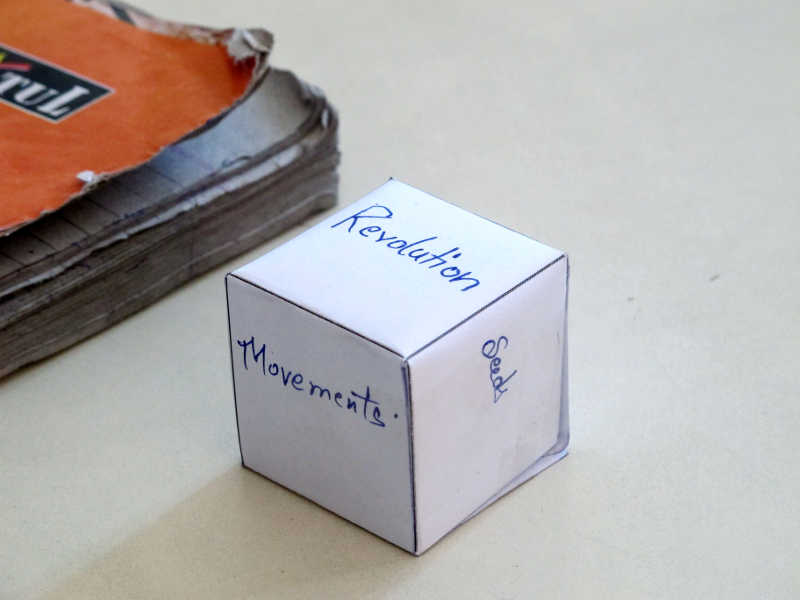
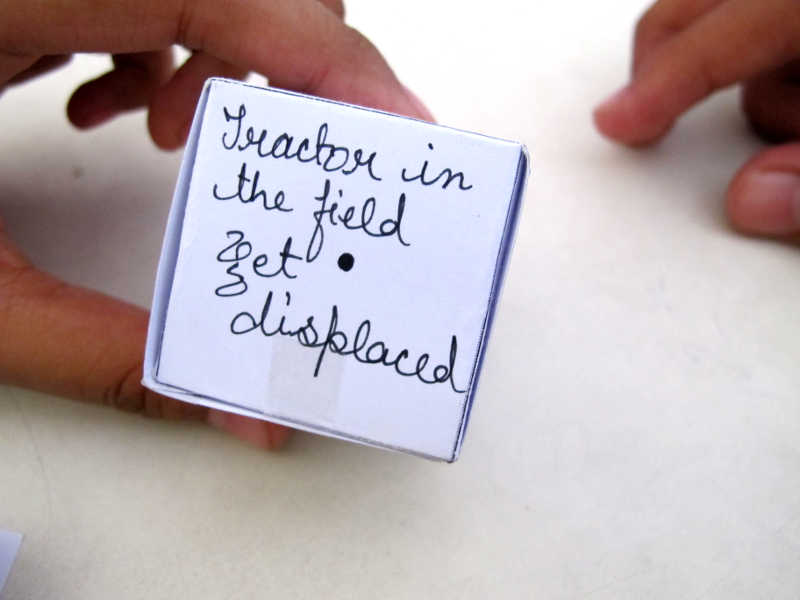
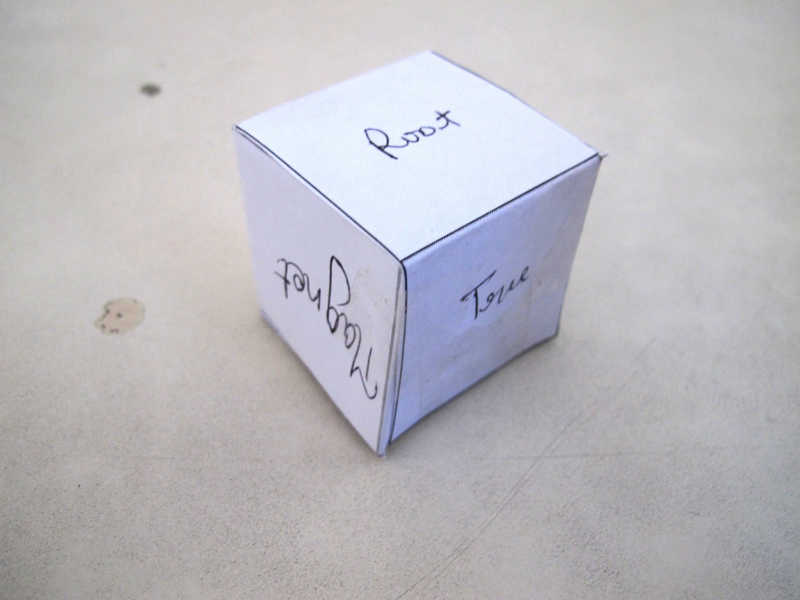
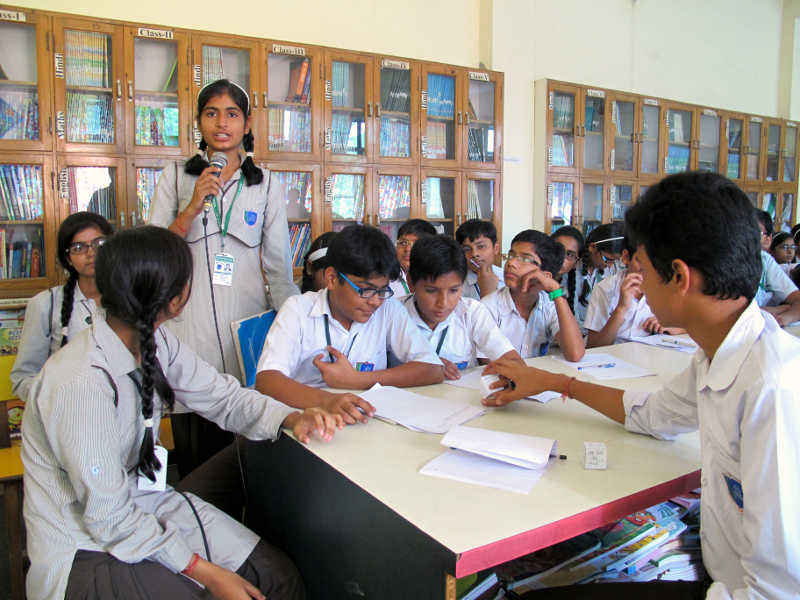
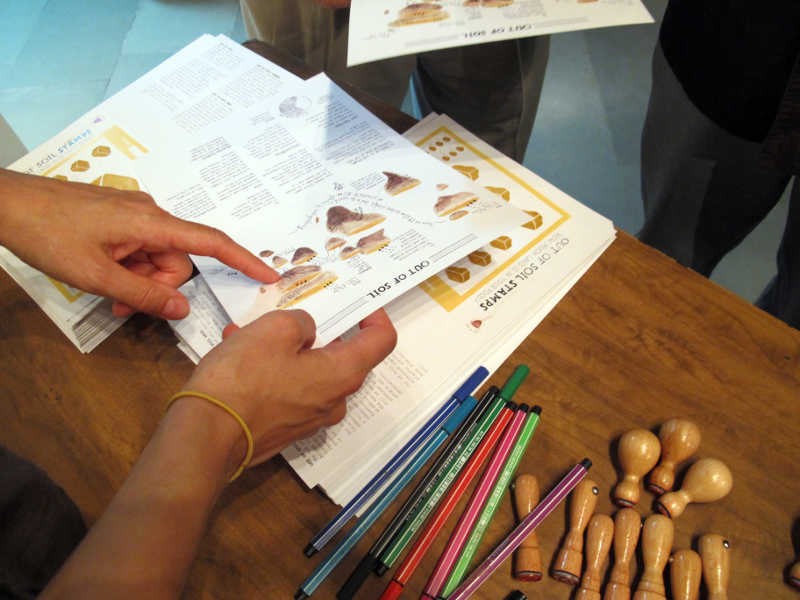
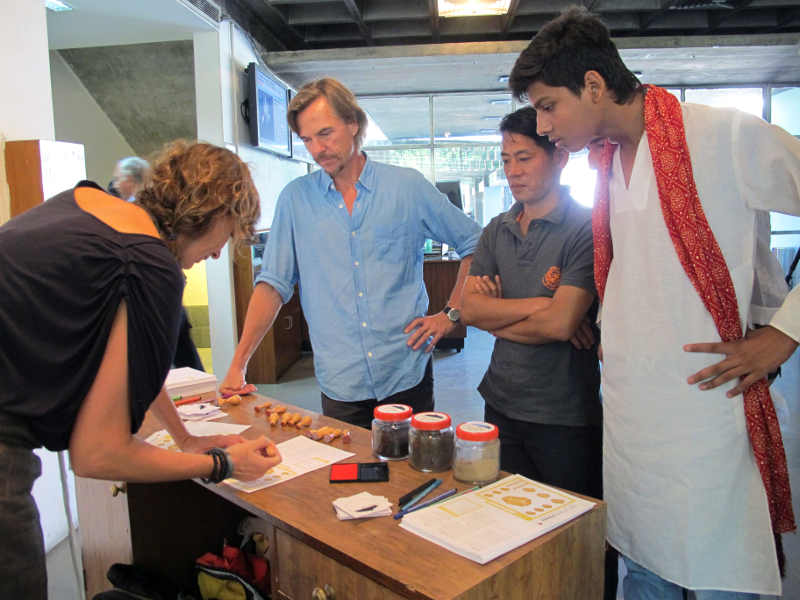
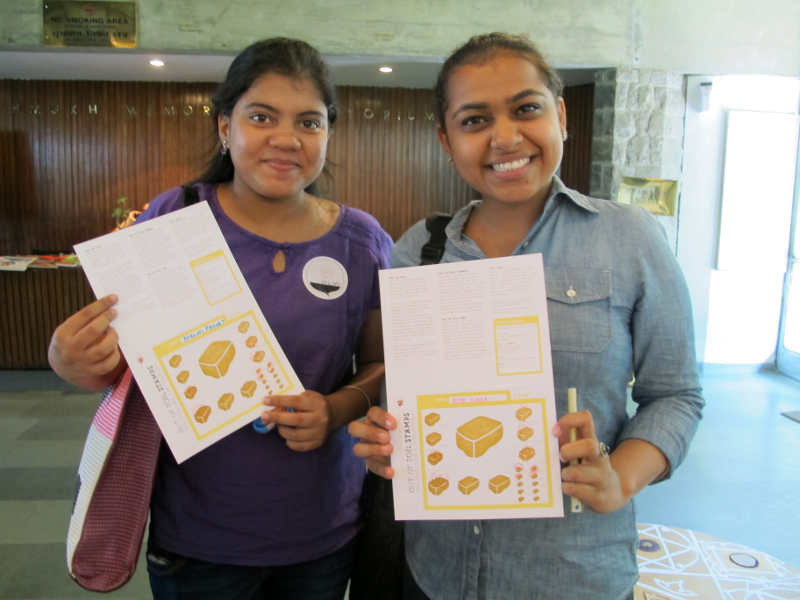
 Blog
Blog